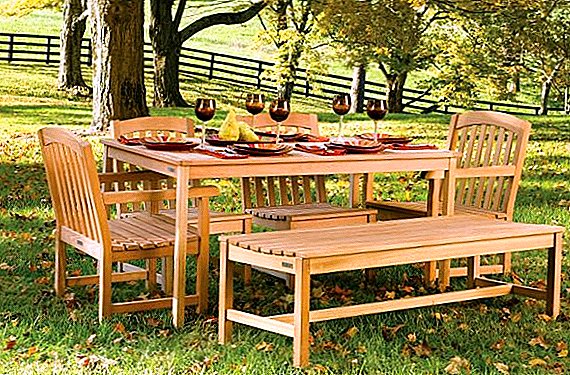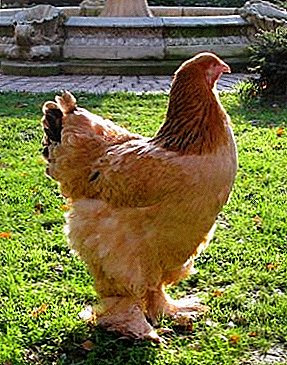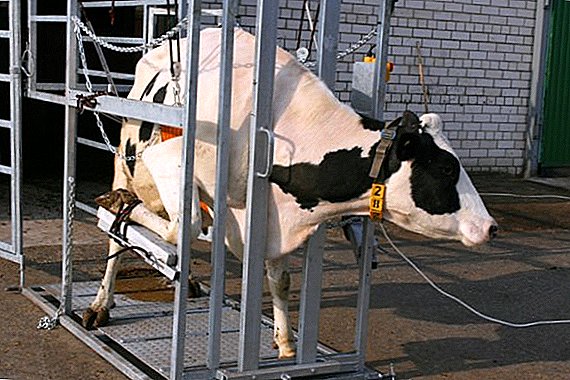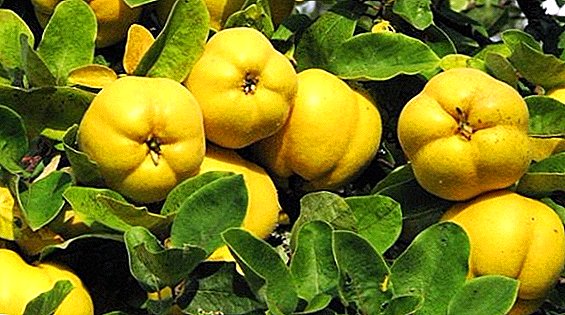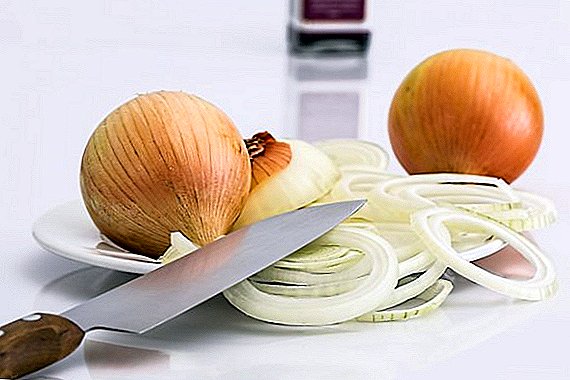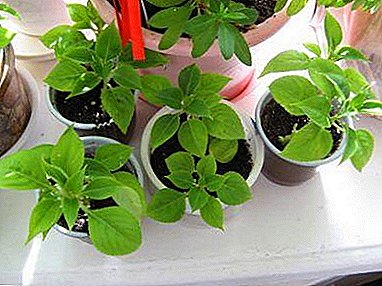
Balsam - a plant that is very popular both among fans of indoor floriculture, and among summer residents, as it is very unpretentious and able to please with its flowering for a long time. Does not require any special skills and the process of reproduction of this flower: it is enough to break off a twig of the variety you like and root it. So how to multiply balsam in this way? When it needs to be done, what preparatory work should be done, how to transplant and root a cutting in the ground and in water, and what further care is required? And finally, what can threaten only the transplanted graft? The answer is in the article.
Features, pros and cons of the method
Cutting - vegetative method of reproduction of a plant, i.e. its reproduction by separate parts - cuttings. This breeding method has several advantages:
- The cuttings makes it possible to fully preserve all the varietal characteristics of the flower, which is impossible to do when propagated by seeds.
- The technology of propagation by cuttings is quite simple: even a beginner grower can handle it.
- The results of grafting can be seen soon. If cutting balsam in early spring (March), in the summer the already formed plant will be ready for flowering.
- This breeding method is effective: only in rare cuttings the root system does not develop. The main reason for such phenomena is the inappropriate conditions of rooting or non-compliance with all requirements for this procedure.
But not all varieties and types of balsam can be grafted: this breeding method is good for perennial flower varieties (for example, the New Guinean hybrid or Waller balsam), but annuals reproduce only by seed (how to grow garden balsam from seeds yourself, you can find out here) .
How to chop at home?
Time
The cutting is usually carried out in the spring. This time of year contributes to the acceleration of all metabolic processes occurring in the plant. It is in the spring of the plant cells begin to divide, forming new ones, and therefore the roots easily appear in the cuttings. Yes, and spring weather conditions only favor the rapid rooting, growth and development of the new young balsam.
Reference! You can root and cuttings, cut in the summer and autumn. Such cuttings are subject to balsam varieties that have bloomed all summer in the open field; in this way they will continue in the winter season.
Preparatory work
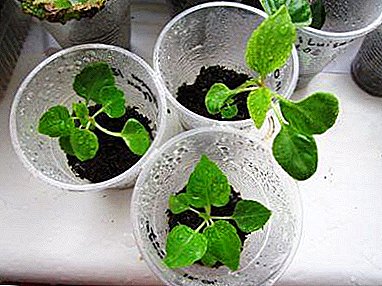 Cuttings. A healthy plant is chosen, which cuts off the tops of young twigs with 2 - 3 interstices about 8-10 cm long. The shoot must be without flowers, and if they are still there, they must be removed. The leaves, which are located below the cutting, are removed, the upper ones must be left. Before the rooting process, you can dip the tips of the stalks into the phytoharmon solution.
Cuttings. A healthy plant is chosen, which cuts off the tops of young twigs with 2 - 3 interstices about 8-10 cm long. The shoot must be without flowers, and if they are still there, they must be removed. The leaves, which are located below the cutting, are removed, the upper ones must be left. Before the rooting process, you can dip the tips of the stalks into the phytoharmon solution.To root steadily rooted, the maternal plant, from which it will be cut, is recommended a week before the procedure to feed complex fertilizers.
- The soil. Moistened sand or a mixture of peat, vermiculite and perlite in the ratio 1: 1: 2 will be suitable for rooting the cutting in the soil. Peat will nourish the sprout, and perlite and vermiculite will give the soil looseness, breathability, prevent overheating and overcooling of the developing root system.
When a rooted sprout is planted in a permanent place, either special soil purchased from a store or a mixture prepared with your own hands should be taken (garden soil and sand are mixed in equal parts; leaf earth, peat and river sand are mixed in a 2: 1 ratio: 1 ). The main condition: the soil should be nutritionally and sterilized.
- Pot. For rooting cuttings in the ground, you can use the usual plastic cups, but do not forget to make them drainage holes. Transparent plastic will provide an opportunity to observe the state of development of the root system of a balsam seedling. The pot into which the cutting will be transplanted after rooting may be made of plastic, ceramics, and clay.
The main condition for the container is the mandatory presence of holes in the bottom of the pot and a small volume, the diameter of the vessel. The balsam actively blooms when the pot is cramped. If the capacity is too much volume, then all the forces of the plant will be aimed at increasing the root and leaf mass, and you can forget about flowering. As an option: several rooted cuttings can be planted at the same time in a wide container, then the balsam bush will be lush.
Landing
- Prepare everything you need for planting balsam:
- rooted cuttings;
- pot;
- substrate;
- drainage;
- scapula.
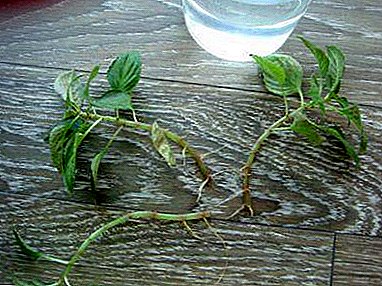 The bottom of the pot for 2 - 3 cm is filled with drainage, the rest of the space is filled with the substrate.
The bottom of the pot for 2 - 3 cm is filled with drainage, the rest of the space is filled with the substrate.- In the substrate with a hand to make a small depression, which is equal in volume to the volume of the young root system of the cutting.
- Lower the seedling into the recess, gently straightening the roots. If the cutting has been rooted in the soil, then it must be transplanted by transferring it: remove the sprout from the old pot and, without destroying the earthen room, place it in a new pot.
- To fill the rooted escape and emptiness with substrate, lightly crush it with hands for fixing in the ground.
Rooting
Balsam can be rooted in water and in the substrate.
In water
Cut cuttings are immersed in water at room temperature, which is poured into a container made of dark glass or plastic. Attention should be paid to the fact that in no case the lower leaves of the cutting fall into the water., as they can cause the process of decay.
In addition, water should not fill the tank completely: there should be room for air in it, which together with water will contribute to the process of formation of roots. The vessel with a petiole is placed in a bright and warm place (not lower than + 17C). Rooting in water occurs after 7 to 14 days.
We invite you to watch a video about the rooting of cuttings in water:
In the substrate
- A small pot is filled with drainage, and then with wet sand or a mixture of peat, vermiculite and perlite.
- With the help of a pencil, a small groove is made (1.5 - 2 cm), where the cutting is cut and processed by "Kornyovin".
- The soil around the cutting is lightly crushed.
- The pot is placed in a warm (not lower than + 17C) and bright place. The root system in the soil is formed after 1 - 3 weeks.
Therefore, be sure to place the container with the handle in a mini-greenhouse. As a greenhouse, you can use a plastic bag, a plastic food container with a tight-fitting lid, or a cut plastic bottle. With the advent of the first roots greenhouse can be removed. But it is also important to remember that such a greenhouse should be opened daily for ventilation, otherwise the escape may simply rot.
Following actions
 After the rooted cutting has been planted in a pot, it must be watered with slightly warm water with the addition of potassium permanganate. Care must be taken to ensure that the soil in the balsam pot is constantly wet.. But the stagnation of moisture can not be allowed to the roots do not rot.
After the rooted cutting has been planted in a pot, it must be watered with slightly warm water with the addition of potassium permanganate. Care must be taken to ensure that the soil in the balsam pot is constantly wet.. But the stagnation of moisture can not be allowed to the roots do not rot.
For better access of oxygen to the roots, it is necessary not to forget sometimes to loosen the top layer of the substrate to a depth of 1 cm. The capacity with the plant must be placed on the window sills of windows facing east or southeast. Balsamine prefers penumbra, it is desirable that its leaves do not fall into direct sunlight.
Temperature drops during the day and at night can destroy the plant, it is necessary that the thermometer does not fall below + 16C. When a plant adapts in a pot and starts growing, you should feed it once every 10 days: you can use special fertilizer from the store, or you can simply alternate nitrogen and phosphate fertilizers.
What kind of environmental conditions are considered ideal for a balsam, as well as the rules for caring for a flower, read our material.
If something went wrong
- Defeat of young seedlings with infections (for example, gray mold) (about what there are balsam diseases, their treatment and prevention, we told here). It is this disease that causes the death of balsam seedlings. And the spores of this fungal infection are likely to be contained in the soil, which is used for planting an already rooted cutting. Therefore, it is necessary to use the purchased substrate or to treat the mixture prepared by hand with fungicides or thermally.
- Rotting cuttings. This is possible if we systematically forget about the daily ventilation of the "greenhouses" in which the rooting of the plant is carried out.
- The stalk in the water fades. It is possible that the slice dried up. It is enough to get the petiole out of the water and update the cut. And also make sure that the escape did not fall into direct sunlight. Cutting is the best way to reproduce balsam, which does not require special skills and time-consuming. In this way, you can constantly extend the life of the variety you like, as well as ensure the flowering of this flower all year round.


 Cuttings. A healthy plant is chosen, which cuts off the tops of young twigs with 2 - 3 interstices about 8-10 cm long. The shoot must be without flowers, and if they are still there, they must be removed. The leaves, which are located below the cutting, are removed, the upper ones must be left. Before the rooting process, you can dip the tips of the stalks into the phytoharmon solution.
Cuttings. A healthy plant is chosen, which cuts off the tops of young twigs with 2 - 3 interstices about 8-10 cm long. The shoot must be without flowers, and if they are still there, they must be removed. The leaves, which are located below the cutting, are removed, the upper ones must be left. Before the rooting process, you can dip the tips of the stalks into the phytoharmon solution. The bottom of the pot for 2 - 3 cm is filled with drainage, the rest of the space is filled with the substrate.
The bottom of the pot for 2 - 3 cm is filled with drainage, the rest of the space is filled with the substrate.